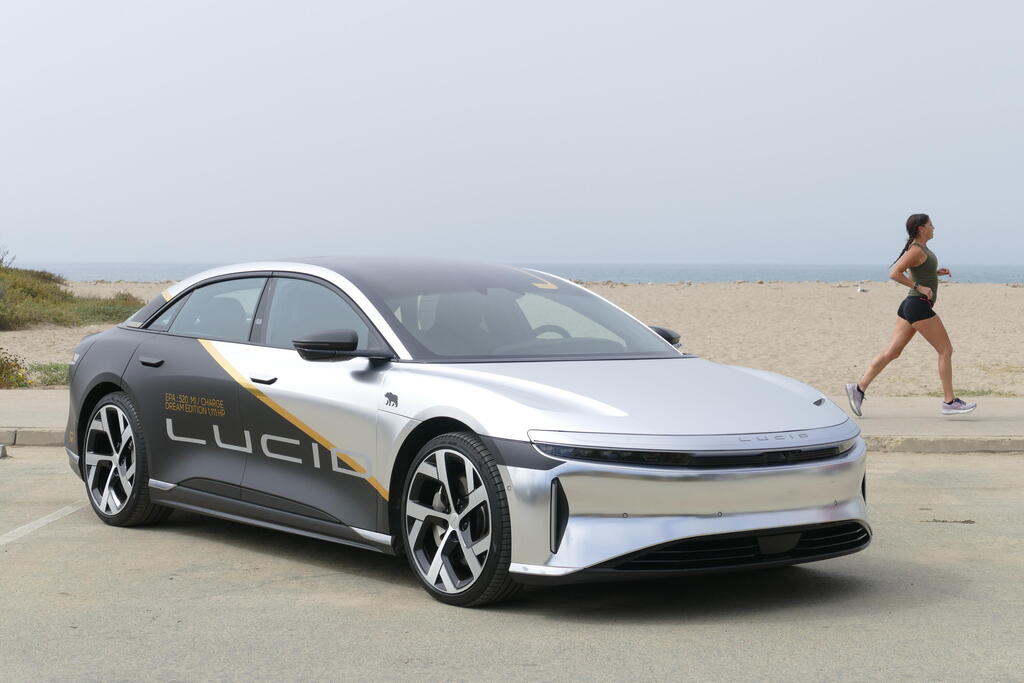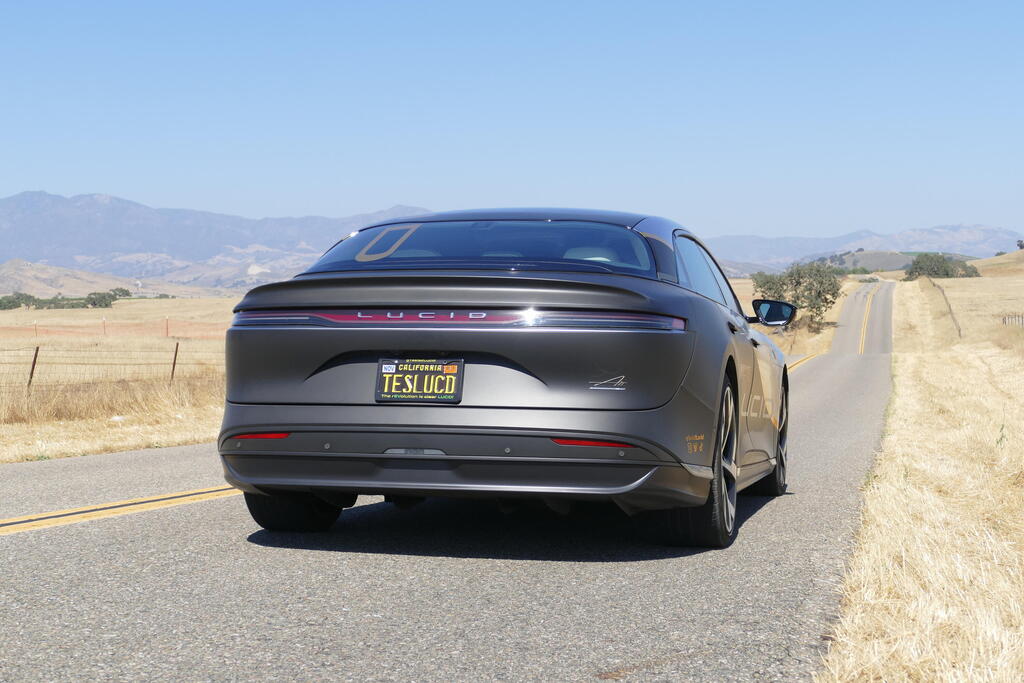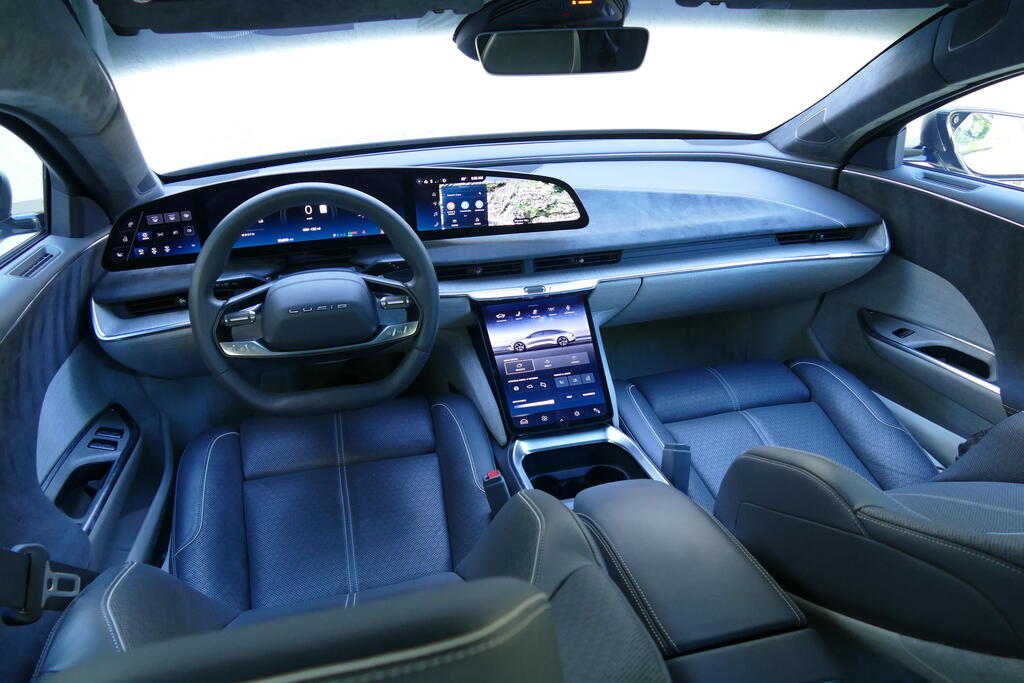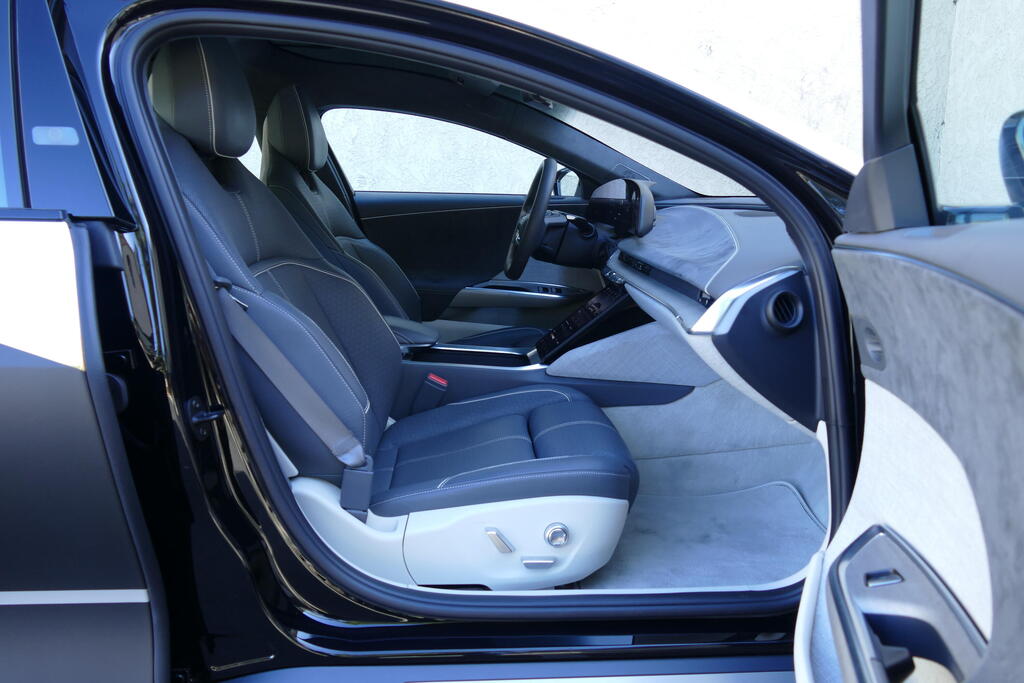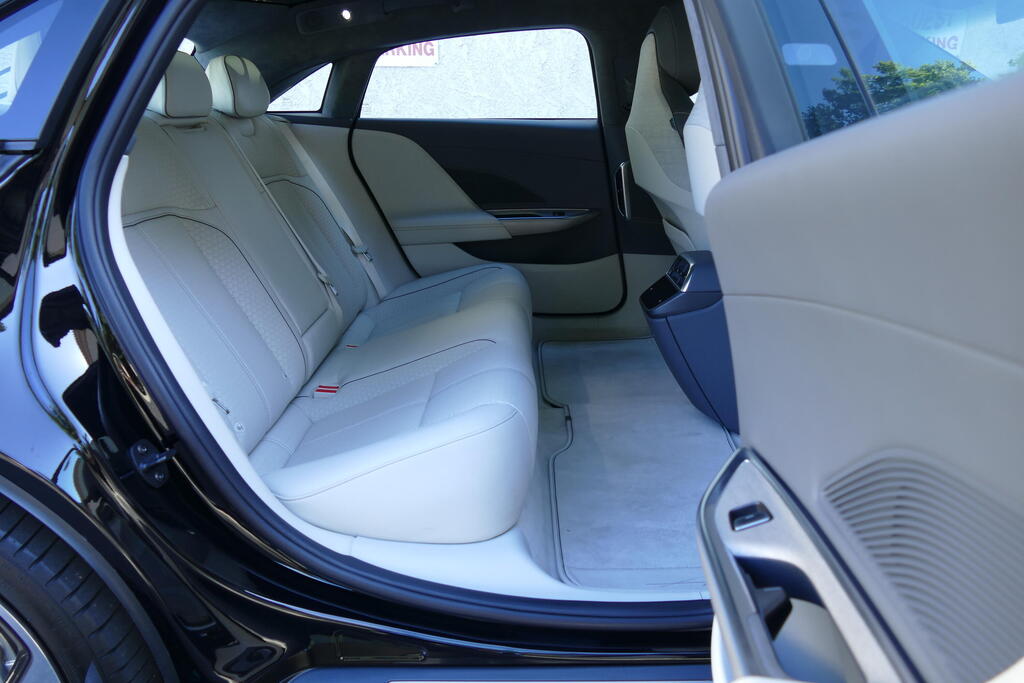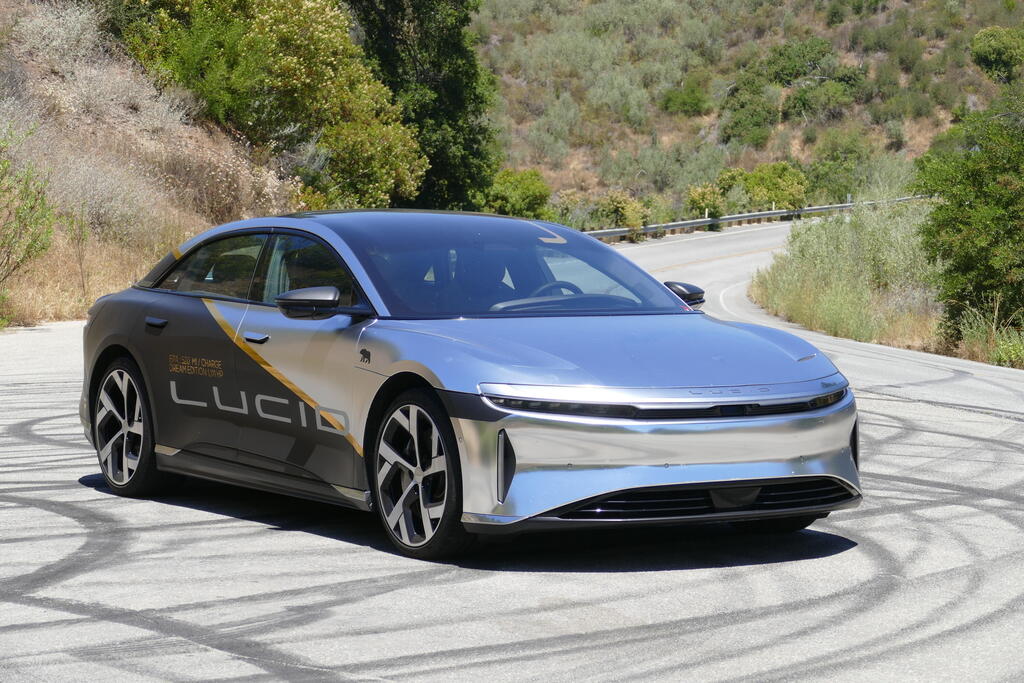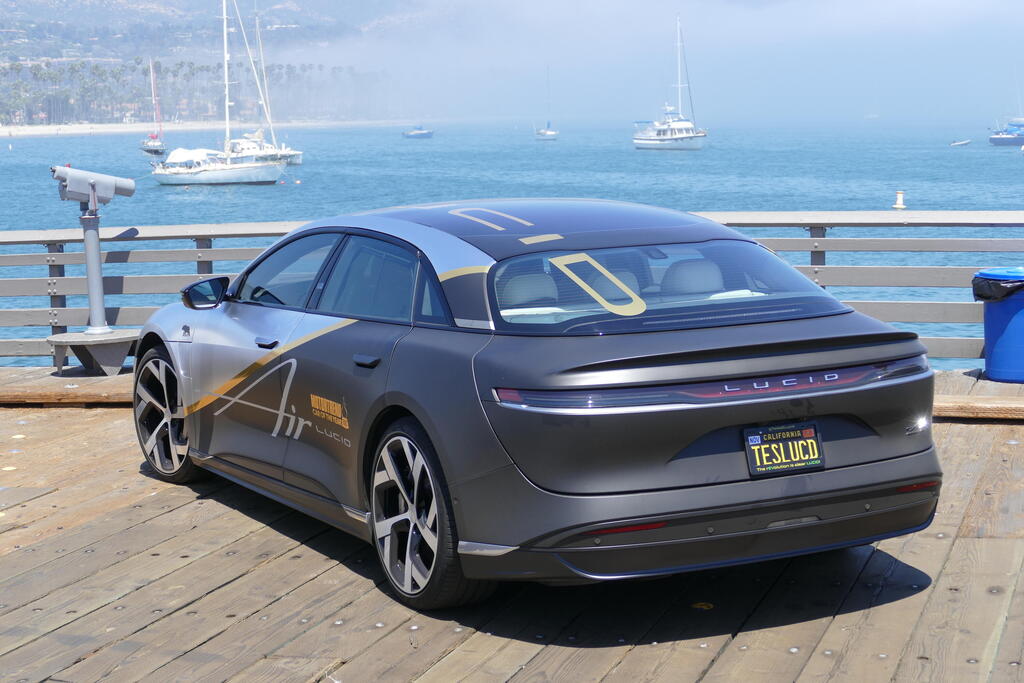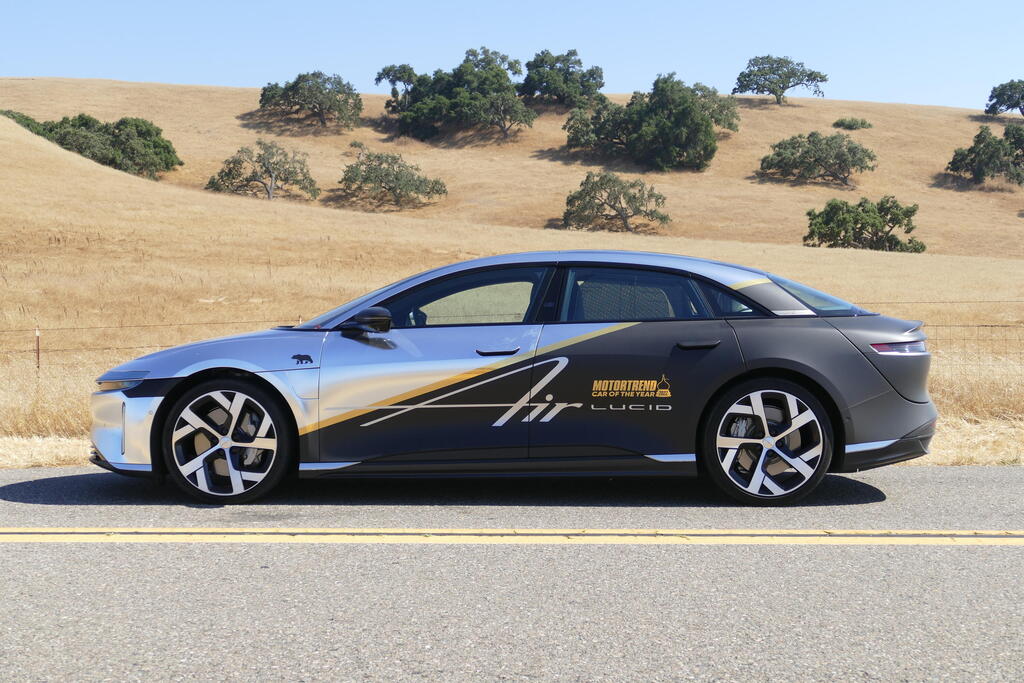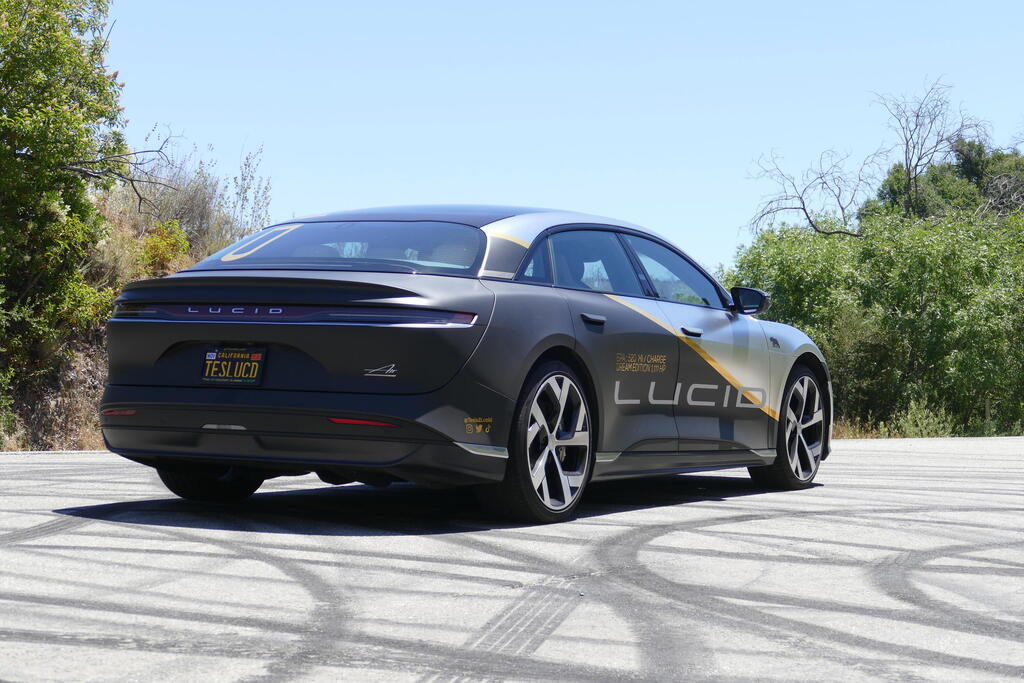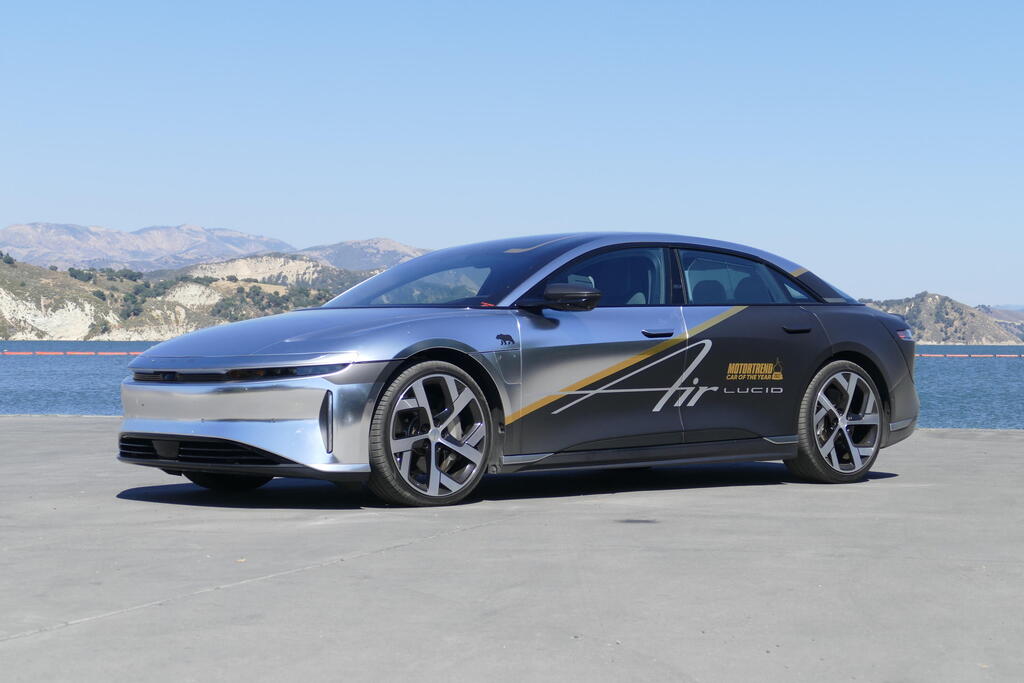Getting your Trinity Audio player ready...
Lucid is not just another young (and Chinese) car manufacturer trying to compete with Tesla. First of all, it's American. Second, while it certainly competes like everyone else with the revolutionary brand, it does so in its own unique way.
More stories:
With an effort to combine technological advantages and original thinking, similar to that of Elon Musk, along with the exceptional quality of traditional, well-established automakers. In essence, it aims to blend the best of both worlds—of Tesla and Mercedes—in order to produce the world's best luxury electric vehicle.
Lucid grew out of Atieva, a company that since 2007 has specialized in the development and production of batteries and electric propulsion systems. A decade later, the company shifted to car manufacturing, prompting a name change.
The Air? It's their first car, and Peter Rawlinson, who now serves as the company's CEO, is behind it. He was poached from none other than Tesla, where he was vice president and was responsible for the engineering development of the Model S. If you look at his resume, you'll find that even before that, he was the chief engineer at Lotus, a manufacturer considered one of the most respected in the world from an engineering standpoint.
Since its launch three years ago, the Air has received wall-to-wall praise. This ranges from breaking the range record for an electric car (with a range of 683 miles) to winning the Car of the Year competition held by the American magazine Motor Trend. But how does it work? Well, here's an exclusive impression.
Like a private jet
The head-turning exterior design, one of the most impressive and unique you can find on the road today, is the work of Derek Jenkins, who came to Lucid with a distinguished résumé in the industry (including Audi, Volkswagen and Mazda). It's no accident that the car looks like a futuristic spacecraft, even in today's boundless world.
Among other things, this is due to dazzling lighting units and a sleek line that combines aerodynamic features. You won't be surprised to learn that it holds the title for the car with the lowest drag coefficient (0.20), alongside the Mercedes EQS.
According to Lucid, the interior design was inspired by a private jet, with a significant differentiation between the driver's cockpit and the rear passengers. This is even evident in the color scheme—darker in the front, lighter in the back. The front windshield extends from the roof to the front seat line, creating a cockpit-like appearance. It also positions the dashboard in a direct line with the extreme windshield and necessitates wearing a sun visor.
From the world of aviation, the steering wheel has dual grips and control switches reminiscent of those found on a passenger plane's control stick. There's also a unique design for the door-opening mechanism, which not only works well but closes softly, as is customary in luxury models.
In front of the driver is a massive, curved 34-inch screen with high resolution (5K), which is divided into three sections: control switches (for lighting, storage compartments and charging ports), a dashboard and a touchscreen for navigation and entertainment. The central console features an additional screen responsible for other systems (such as driving modes, climate control and various settings) and has an electric sliding mechanism that reveals a hidden compartment behind it.
Despite the limited number of physical buttons, operating the systems is relatively easy and convenient thanks to large icons. To our delight, unlike its American competitor, there is a manual adjustment for the airflow from the climate control vents. In a nod to features that may not necessarily need to be replicated, mirror and steering adjustments are performed from the central screen, similar to Tesla.
The driving position is quite good, and the seats (with heating, ventilation and massage functions) are supportive and comfortable, even for long hours of travel. The quality of the materials is higher than what is currently standard in the industry, featuring a tasteful blend of metal, wood, and fabric, along with a ceiling lined in Alcantara.
Backseat luxury
The Air is significantly smaller than the Mercedes EQS, being shorter by about 9.4 inches (195.9 inches) and having a shorter wheelbase by roughly 9.8 inches (116.5 inches). However, the rear passenger space is substantially better, thanks to advanced platform design and the compact integration of the powertrain and batteries.
The rear passengers also enjoy impressive amenities, with nearly 90-degree door opening angles and window curtains for maximum privacy. The rear cargo space is slightly larger than that of the Mercedes, at approximately 22.1 cubic feet (+0.6), with an additional compartment beneath the floor. Unlike the German competitor, there is also a massive front cargo area, at about 10 cubic feet, which is the largest in an electric passenger car.
The advanced safety system is comprised of 32 sensors, 14 cameras, 5 radar units, 12 ultrasonic sensors and LiDAR. However, it currently doesn't offer the option for hands-free autonomous driving (Level 2.5) on predefined roads, as is available with Tesla, GM and Mercedes. The surround-view camera system projects the blind spots onto the dashboard when the turn signal is activated, similar to what is common in Hyundai models.
Fast, really fast
The Air is offered in several battery and motor configurations. The base model has 124 horsepower with rear-wheel drive (equivalent to 435 kilowatts) or with all-wheel drive (equivalent to 628 kilowatts). The mid-tier version has 150 horsepower and all-wheel drive (equivalent to 812 kilowatts).
The highest-end versions already have 159 horsepower and all-wheel drive in two different power levels: 926 kilowatts (in the Dream R version) aimed for long-range (about 546 miles according to the European WLTP standard), 62 miles more than the Mercedes EQS and 143 miles more than the Tesla Model S.
The test car was the performance version (Dream P) with 1,126 kilowatts, able to accelerate from 0 to 62 mph in 2.7 seconds and with a slightly shorter range of approximately 534 miles.
Before Tesla fans start waving the acceleration figure of the Model S Plaid (2.1 seconds), let's remember that Lucid has already introduced the Sapphire version with more than 1,200 kilowatts from three engines (two of them in the rear) and a promise to break the 2-second barrier for 0-62 mph acceleration, a territory where extreme electric vehicles like the Rimac Nevera reside. In any case, the performance here is way (but way way) beyond what's actually needed, and attempting more than one launch will end in dizziness.
Quiet, comfortable and dynamic
In other aspects, the propulsion system is less impressive. It does not prevent rollback when starting on an incline (unless you've selected Auto Hold mode) and also includes noticeable lag at both low and high speeds.
The regenerative braking is also not top-tier, with only two modes and activation via the screen—instead of through more efficient and convenient manual control paddles. A 900V battery enables use of ultra-fast charging stations (200 kilowatts for smaller batteries, 300 kilowatts for larger ones), adding about 20 miles for each minute of charging or approximately 298 miles in about 20 minutes.
The base platform is a specialized one developed by Lucid called LEAP (Lucid Electric Advanced Platform), which will be used for future models, such as the Gravity—a leisure vehicle with seating for seven passengers that is currently undergoing final driving tests, slated for release in early 2024.
Unlike its competitors equipped with air suspensions, the Air features coil springs, a setup generally less suited for comfort but more for dynamic capability and a more direct connection between the car and the road. These are supported by adaptive Bilstein shock absorbers that adjust their stiffness according to road conditions and the selected driving mode.
The connection to the asphalt is provided by Pirelli P-Zero tires from the HL (High Load) series, specially developed for this car. They have a 20% higher load-bearing capacity than regular P-Zeros and feature a unique rubber compound that helps reduce noise.
Surprisingly, the ride comfort is very good, no less than what the more advanced systems from competitors offer. Road and wind noise remain outside the cabin even at speeds that would land you in jail in California.
The dynamic capability is among the highest in its category, the result of meticulous tuning of the various systems, without the use of artificial tricks like rear-wheel steering or active stabilizer bars. The car barely leans due to weight transfer, and the power distribution between the engines is excellent, allowing you to get back on the throttle sooner than you might have thought.
The steering is quick and precise, requiring only 2 turns from lock to lock, and the brakes have an excellent feel—unlike what is commonly found in regenerative braking systems. On winding and hilly roads, the Air feels much lighter than its actual weight (approximately 5,280 pounds) and significantly smaller than its actual dimensions. It "shrinks" around the driver in a way that only the best cars of the gasoline era knew how to do.
Innovation and quality
The Lucid Air is one of the best electric cars we've driven and one of the most impressive vehicles we've experienced. Considering that this is the debut model from a young manufacturer, it's a significant achievement. Lucid is one of the few companies that successfully strike the right balance between the new world of the industry—with originality and technological advancement—and the high quality of mechanical systems and passenger cabins commonly found in established luxury brands.
With the Air, you get Tesla-like performance, the comfort and quality of a Mercedes, and the dynamic capability of a Porsche (in electric versions), all wrapped in a stunning design. We would even go so far as to say that the original and high-quality driving environment, as well as the efficient use of vehicle space, is better than those of the aforementioned three brands. So yes, we believe that this is indeed the best electric car that money can buy today.
Engine: Electric
Battery: 118 kWh
Power/torque: 1,126 hp / 104.6 lb-ft
Drive: Dual-motor (All-wheel drive)
Length: 195.7 inches
Width: 76.2 inches
Height: 55.5 inches
Wheelbase: 116.5 inches
Weight: 5,368 pounds
Trunk/front storage capacity: 10 cubic feet / 22.1 cubic feet
0-62 mph: 2.1 seconds
Top Speed: 167.8 mph
Airbags: 9
Safety rating (Euro NCAP): Not yet tested
Price: Starting from NIS 1 million


